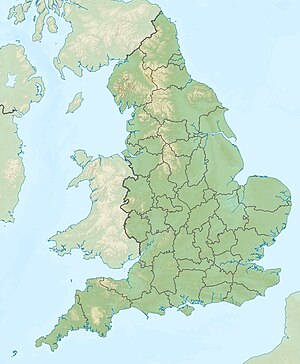The Roskill Commission (formally the Commission on the Third London Airport) was a UK Government Commission charged with looking into finding a site for a new airport for London. Chaired by High Court judge Eustace Roskill, it sat from 1968 to 1970 and published its report in January 1971.
Since the 1950s, London's primary passenger airport had been at Heathrow, with a second one at Gatwick. The Commission's aim was "to enquire into the timing of the need for a four-runway airport to cater for the growth of traffic at existing airports serving the London area, to consider the various alternative sites, and to recommend which site should be selected."[1][2]
Roskill's initial list of 78 sites was reduced to an intermediate list of 29, before detailed consideration of four short-listed locations:
The Commission recommended that a site at Cublington near Wing in Buckinghamshire (to the north-west of London) should be developed as London's third airport.
The UK government rejected the Commission's proposal for Cublington, but accepted a dissenting report by a member of the Commission, Colin Buchanan, which recommended that a new airport should be developed at Foulness (later known as Maplin Sands) in Essex.
An Act of Parliament was passed – the Maplin Development Act 1973 – that paved the way for a Thames Estuary Airport at Maplin Sands.[3] However, the airport proposal was shelved after the 1973 oil crisis, and plans for a new third airport were replaced by smaller-scale redevelopment of Stansted, a site not short-listed by the Roskill Commission.[4]
In 2012 the UK government established the independent Airports Commission to look again at the future of London's airports.
- ^ Roskill (1971). Report, Commission on the Third London Airport. London: HMSO.
- ^ "Aviation: proposals for an airport in the Thames estuary, 1945–2012" (PDF). House of Commons.
- ^ "Maplin Development Act 1973". Parliamentary Debates (Hansard).
- ^ Needham, Duncan (27 October 2014). "Maplin: the Treasury and London's third airport in the 1970s". History & Policy. Retrieved 27 July 2016.
